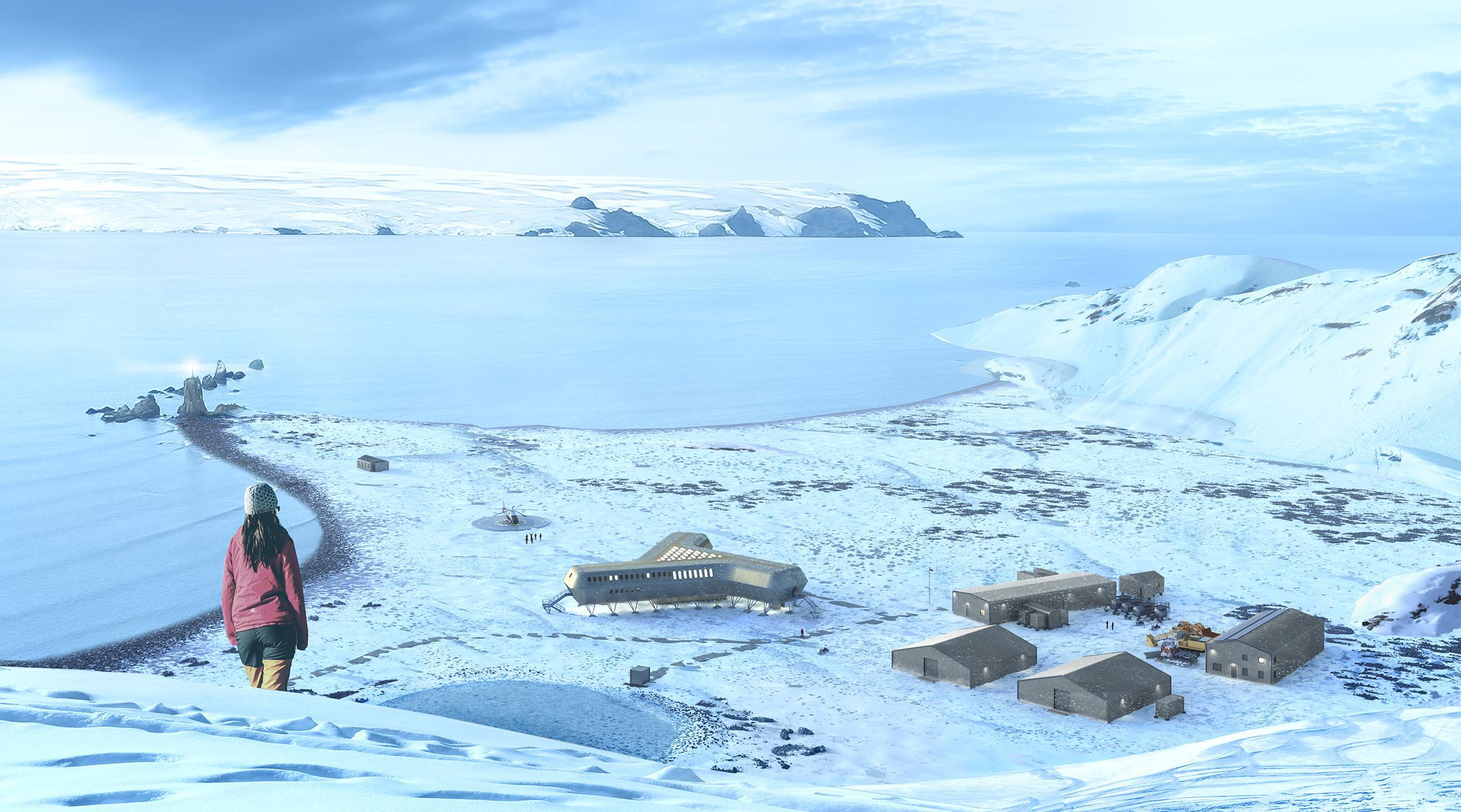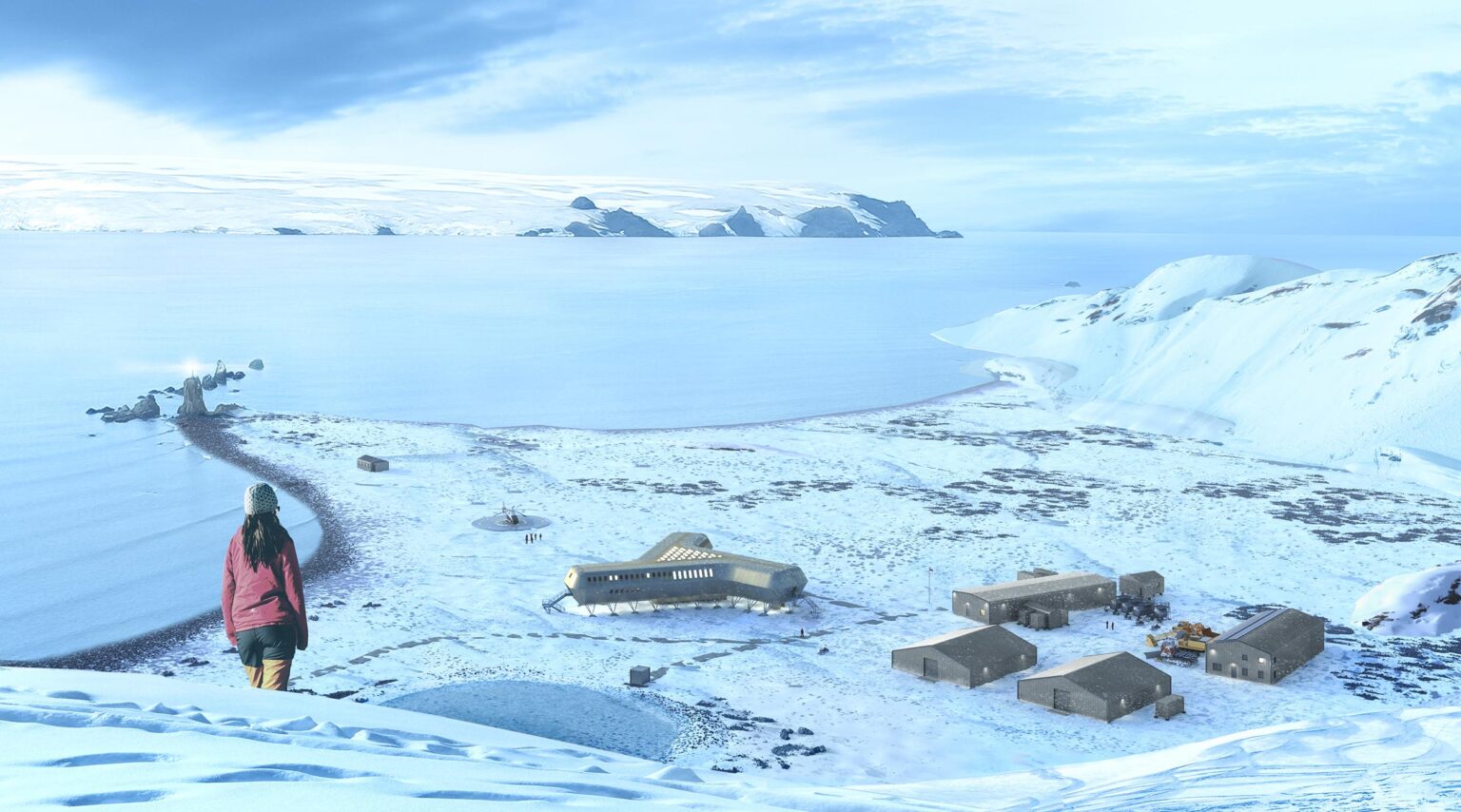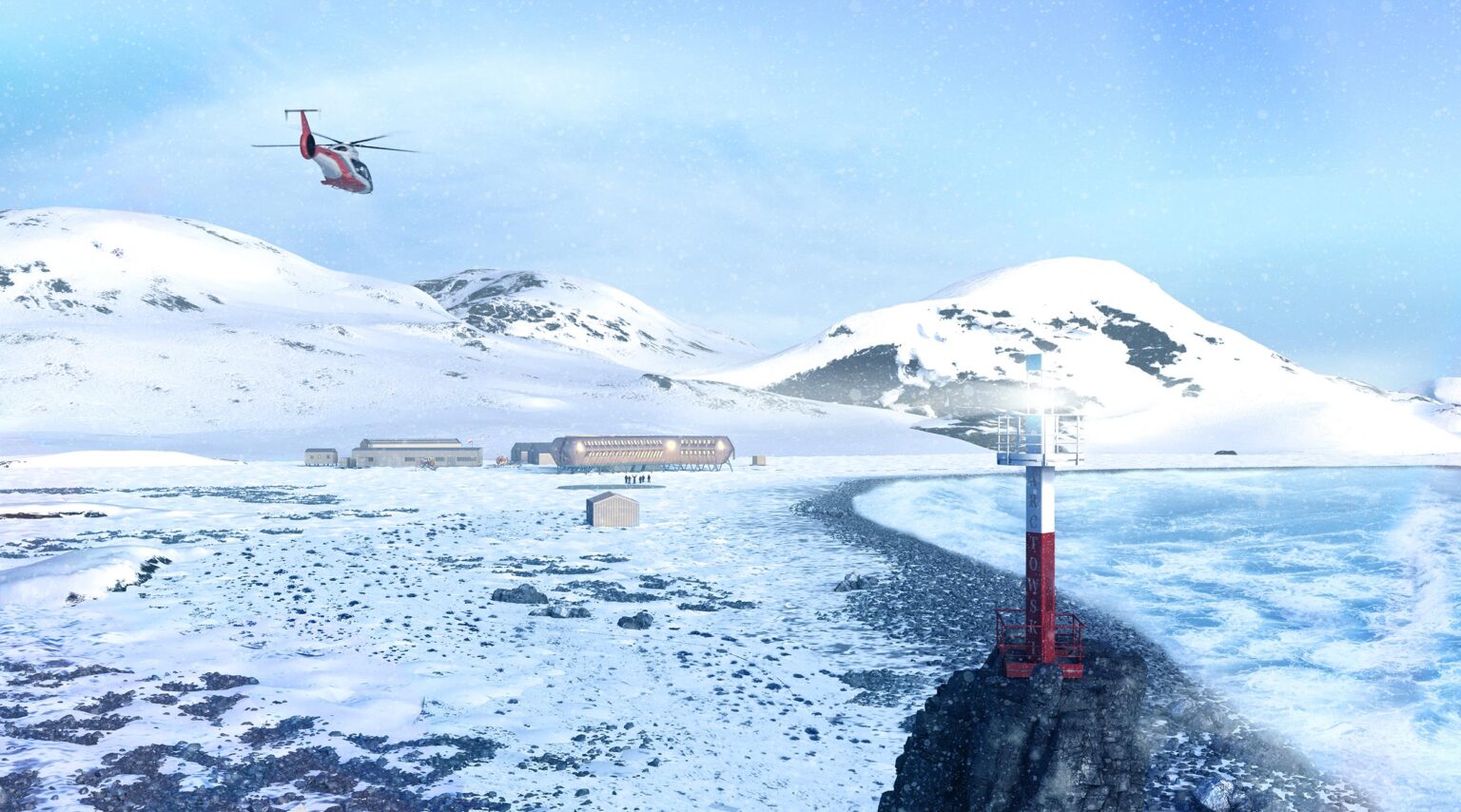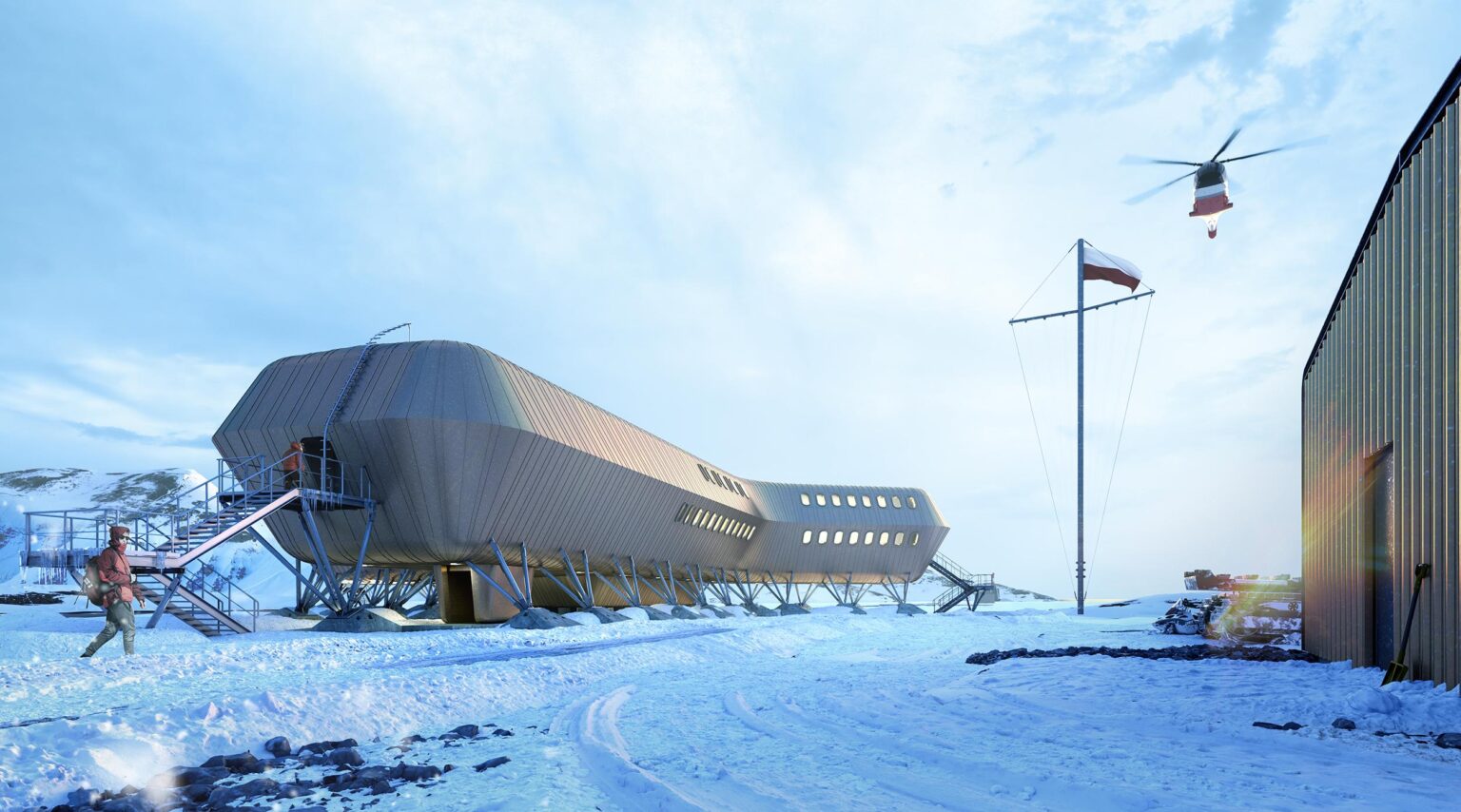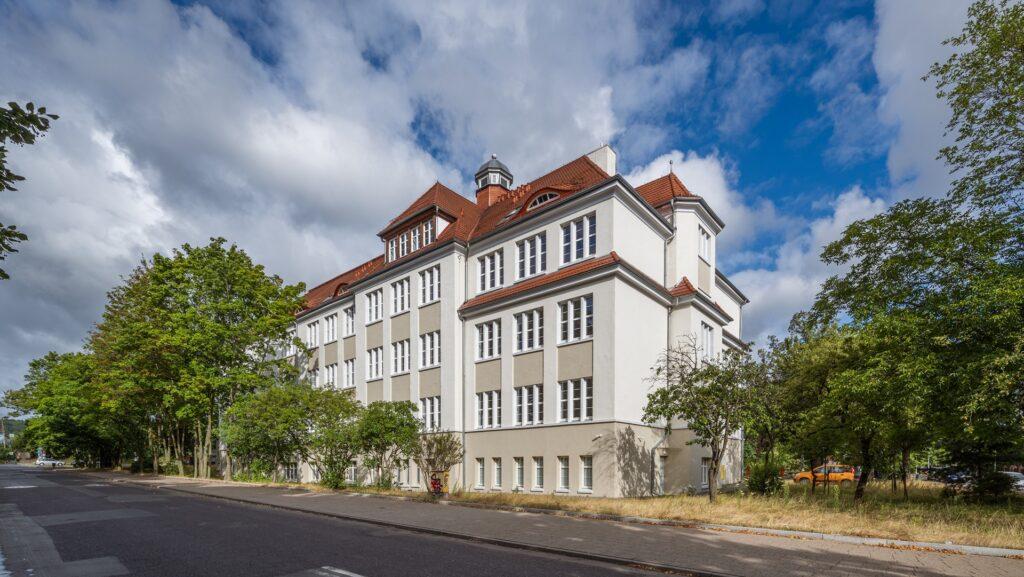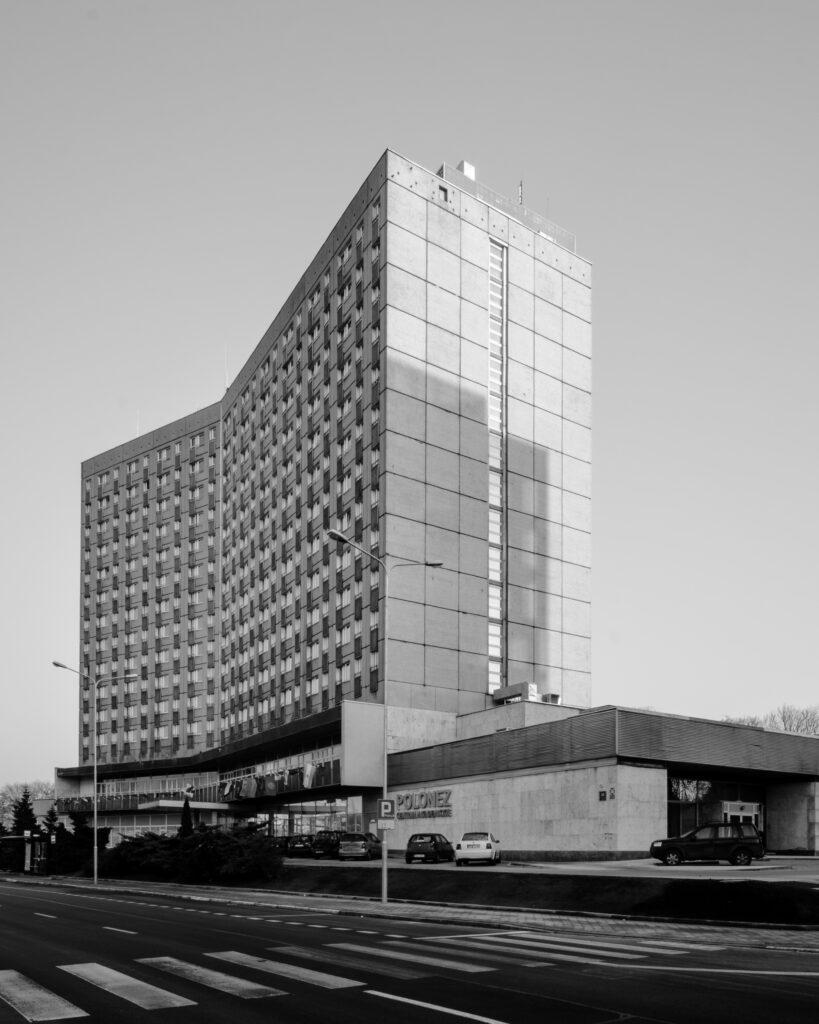The design work schedule was adopted to allow some work to be carried out during the summer season while still in design. Despite logistical inconveniences due to the ongoing pandemic and unusually difficult weather conditions, this past season saw the delivery and installation of the first structural elements to the island. The first shipment of materials included nearly 380 m3 of precast concrete and 80 tons of steel structure.
New lighthouse with historic Arctowski inscription
Situated atop a rocky outcrop jutting into the sea, the lighthouse is not only an important navigational point for navigation in Admiralty Bay, on which the station is located, but is also a landmark of the Polish outpost. The existing structure, after more than 40 years of operation under extremely adverse conditions, was slated for demolition. A new lighthouse will stand in its place, which was conceptually designed by Kurylowicz & Associates studio. Engineers from our design office DEMIURG Project S.A. are responsible for the design of the structure.
The weather conditions that the lighthouse structure will have to resist are extreme. The rock on which the lighthouse will be perched is constantly battered by hurricane winds and washed by sea waves. High wind loads, a highly corrosive environment, risk of icing, severely hampered installation conditions – all this had to be taken into account in the design of the structure. – Hubert Maciejewski, Antarctic Station Project Manager and our Chief Designer
Due to the Investor’s expectation that the lighthouse should be as much prefabricated as possible, the whole was divided into several shipping items, limiting the amount of work in integrating the structure on site, while keeping in mind the assembly difficulties that will have to be faced on site. At the stage of design work, even the installation of a lighthouse using a helicopter was considered.
First, the base of the attachment to the basalt rock will be assembled with steel anchors. Such a solution allows easier adjustment to uneven ground. The base will then be enclosed by a service platform located on top of the rock. In the next stage, the basic core of the lighthouse will be built up, along with the gallery. To ensure tightness, the shaft is designed as a shell-welded section made of steel plates. Space has been provided inside for running utilities. Once the shaft is embedded, a service platform located on the lighthouse’s neck will be installed, allowing access to the light source and providing an excellent vantage point.
The lighthouse will also be equipped with a new light source to ensure the lighthouse’s visibility from up to 10 nautical miles away.
Closed circuit
In order to reduce energy consumption, the functional layout and designed installation solutions in the new station’s main building will allow some rooms to be taken out of service for the winter. Although power generation for the station will be based primarily on modern generators, the power system will be expanded with photovoltaic panels, and surplus energy produced during periods of lower demand will be stored in energy banks.
A state-of-the-art wastewater treatment plant was designed to meet stringent environmental conditions. Finding a suitable solution to guarantee reliability was no easy task. It was due to the fluctuation of wastewater inflow to the treatment system associated with the high variability of people staying at the station during the year and the need to fit the treatment plant into several shipping containers.

Polish Arctowski Station
Polish Antarctic Station named after Henryk Arctowski Island is located in the South Shetland archipelago, on King George Island, off the coast of Admiralty Bay. Located 14,000 kilometers from Poland, it is one of 40 year-round stations present in this part of the world. It has been in continuous operation since 1977. The database is used by scientists from Polish and foreign research units. In recent years, it has been more than 80 people from 36 institutions. More than 40 years ago, the station’s main building was located a dozen meters from the seashore, but today encroaching water threatens to flood it. The harsh weather conditions have also caused it to be heavily depleted over the decades. The project for the new Station has received funding from the Ministry of Science and Higher Education in the amount of PLN 88 million for the construction of a new main building and the modernization of all infrastructure and associated facilities.

